Content for TR 22.822 Word version: 16.0.0
A Main characteristics of 5G satellite components
A.1 Main characteristics of 5G satellite access networks
A.2 5G Satellite network-based architectures
$ Change history
A Main characteristics of 5G satellite components p. 30
A.1 Main characteristics of 5G satellite access networks p. 30
A.1.1 General p. 30
This Annex describes the main characteristics of satellite networks when considering their integration with the 5G system.
A.1.2 Class of orbit p. 30
On the one hand, our planet attracts as a main body the much smaller satellite, which motion is dictated as a consequence by the laws of Kepler. On the other hand, the environment of Earth can be also constraining: the higher density of the atmosphere, debris from launchers and former satellites in the lower altitudes, as well as higher energy particles trapped in the Van Allen belts between 2000 and 8000 km's altitudes are to be avoided. These two constraints contribute to defining several classes of orbits that are used for communication satellites:
- GEOstationary (GEO) satellites: located precisely in the plane of the Equator at an altitude of 35 786 km, these satellites rotate at the same rate as the Earth's rotation: a GEO satellite stands still with respect to Earth. Thanks to this property, a single GEO satellite is sufficient to create a continuous coverage.
-
Non-Geostationary Orbiting (NGSO) satellites: NGSO satellites do not stand still with respect to Earth. Should service continuity be required over time, a number of satellites (a constellation) is required to meet this requirement; the lower the altitude the higher the number of satellites
Different classes of NGSO satellites are listed below:
- Low-Earth Orbiting (LEO) satellites: with altitude ranging 500 km and 2000 km, and with inclination angle of the orbital plane ranging from 0 to more than 90 degrees. These constellations are placed above the International Space Station and debris, and below the first Van Allen belt.
- Medium-Earth Orbiting (MEO) satellites: with altitude ranging from 8000 to 20,000 km. The inclination angle of the orbital plane ranges from 0 to more than 90 degrees. These constellations are placed above the Van Allen belts.
- Highly-Eccentric Orbiting (HEO) satellites: with a range of operational altitudes (the orbit of such satellites being designed for the spacecraft to be exploited when the vehicle is closer to its apogee - the higher part of the orbit -) between 7,000 km and more than 45,000 km. The inclination angle is selected so as to compensate, completely or partially, the relative motion of Earth with respect to the orbital plane, allowing the satellite to cover successively different parts of Northern land masses (e.g. Western Europe, North America, and Northern Asia).
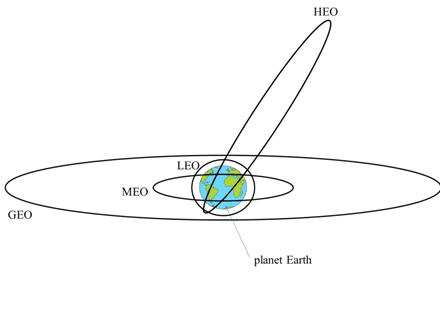
A.1.3 Geometrical coverage of satellite and propagation delay p. 31
As depicted in the following figure, the theoretical geometrical coverage of a satellite is associated to its altitude and the minimum elevation angle under which the satellite is seen by the UE above the horizon.
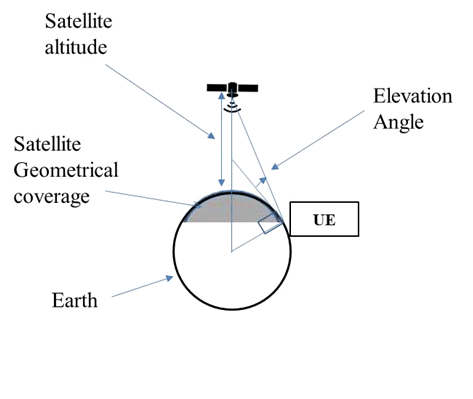
The following figure illustrates the geometrical coverage for a LEO satellite and for geostationary-satellites:
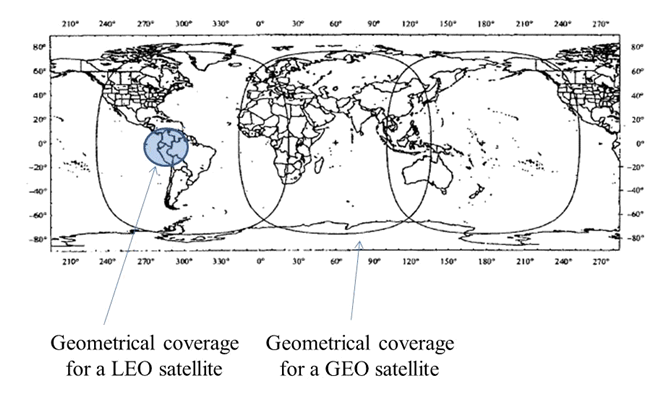
Figure A.3: Illustration of the geometrical coverage of a LEO satellite and of GEO satellites
(⇒ copy of original 3GPP image)
(⇒ copy of original 3GPP image)
The following tables provide elevation, distance and geometrical coverage related figures for different classes of satellites:
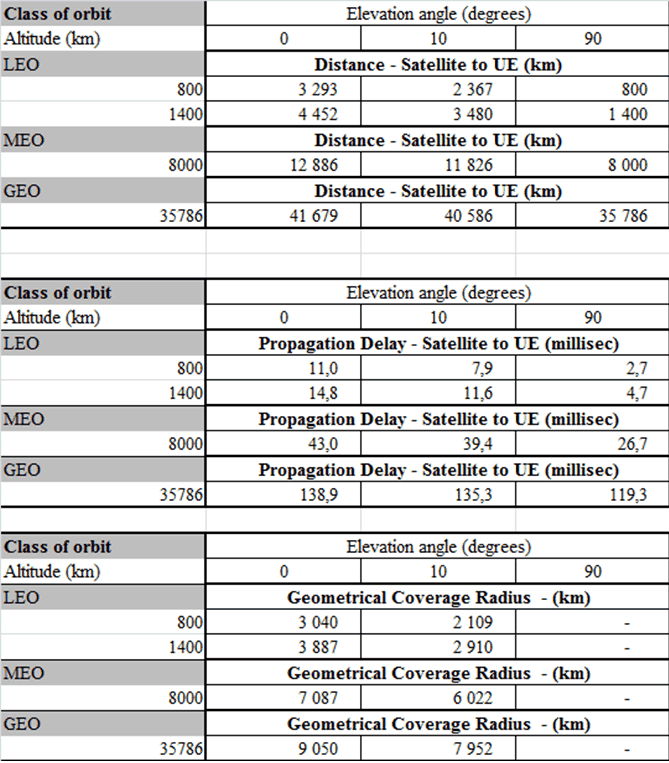
Figure A.4: Geometrical coverage radius, propagation distance and delay for different classes of orbit
(⇒ copy of original 3GPP image)
(⇒ copy of original 3GPP image)
The following table illustrates the number of satellites that are necessary for a constellation of satellites to provide continuous coverage for an elevation angle ranging from 5 to 10 degrees. Global coverage may not be fully achieved for MEO or GEO satellite, however in this case the vast majority of the world population is covered.
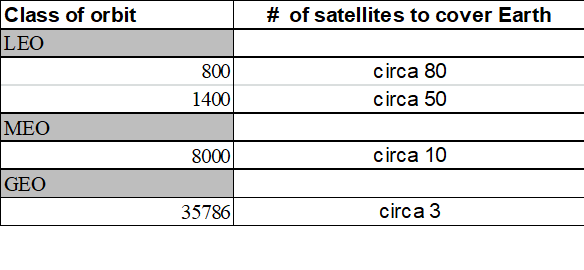
Figure A.5: Illustration of number satellites in a constellation for continuous Earth coverage
(⇒ copy of original 3GPP image)
(⇒ copy of original 3GPP image)
A.1.4 Radio coverage p. 33
A spacecraft is delivered in orbit by a launcher which performances are constrained by its mass. It consists of a platform and a payload. The platform maintains the spacecraft at the right orbital position with the right attitude, generates power from solar panels or from energy stored in batteries, and dissipates thermal power. The payload receives radio signals transmitted by transmitters located on ground as part of the RAN or from the UEs, and transmits after amplification, frequency conversion, and possibly signal demodulation, routing and remodulation. The payload of the spacecraft is power limited, and it would not be economically viable for a satellite network designer to offer such margins that would allow a satellite signal to penetrate directly into buildings.
To optimise the delivery of information the radio coverage of the satellites is reduced with respect to the geometrical coverage thanks to antenna design optimisation. Antenna steering, switching or routing between beams can also be used to achieve coverage flexibility.
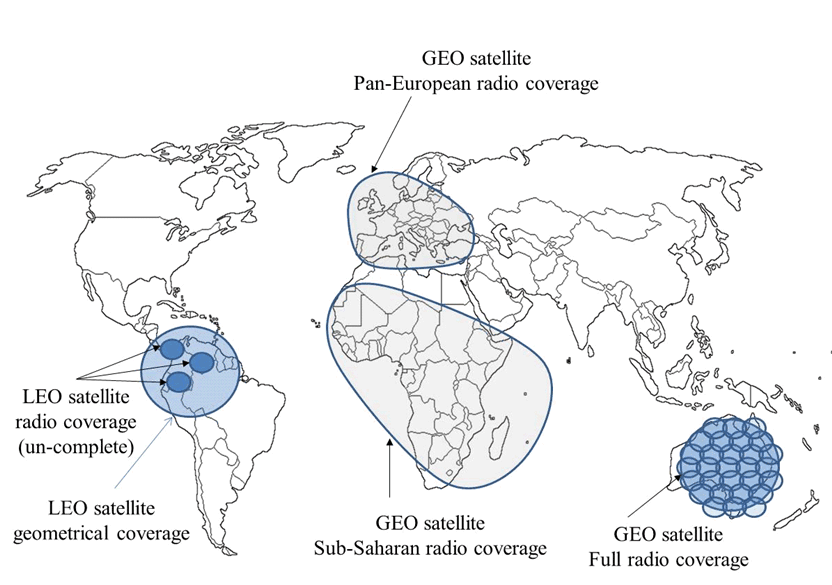
A.2 5G Satellite network-based architectures p. 33
In this technical report, a satellite network refers to the combination of a radio access network provided through a satellite-based infrastructure and a core network.
The following figure depicts possible architectures that can be implemented with bent-pipe satellites (transparent, with no on-board processing capabilities) and regenerative satellites (with on-board processing capabilities).
The following figure describes a 5G satellite access network which is an access network that comprises a non-3GPP satellite access network connected to the 5G Core Network. In this case the satellite is a bent pipe satellite: the same radio protocols are used between the UE and the satellite, and between the satellite and the satellite hub.

Figure A.7: 5G Satellite access network with a Non-3GPP access network and 5G Core Network
(⇒ copy of original 3GPP image)
(⇒ copy of original 3GPP image)
The following figure describes a 5G satellite access network which is an access network (that comprises a 5G satellite access network connected to the 5G Core Network. In this case the satellite is a bent pipe satellite or a regenerative satellite: the NR radio protocols are used between the UE and the satellite, the F1 interface is used between the satellite and the gNB.
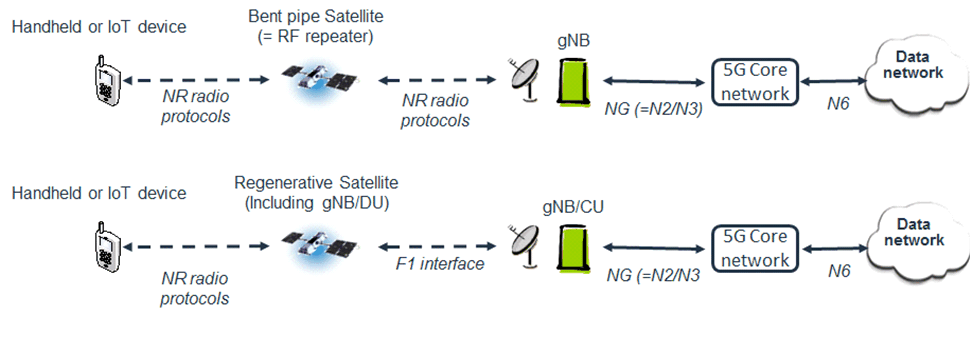
Figure A.8: 5G Satellite access networks with a 5G RAN and 5G Core Network
(⇒ copy of original 3GPP image)
(⇒ copy of original 3GPP image)